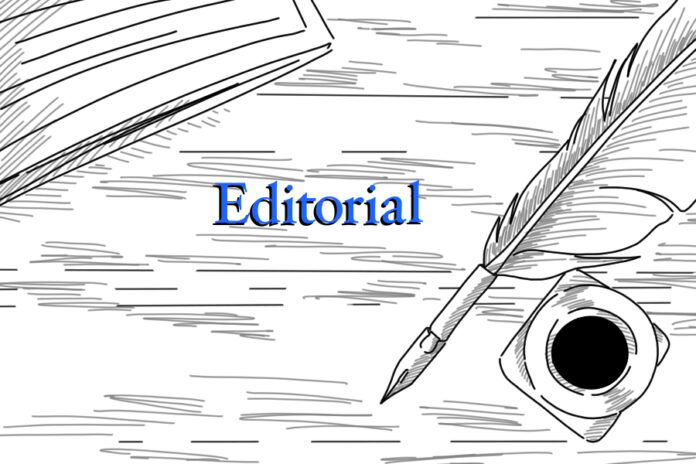To: Students everywhere (and also some of our professors, to be honest)
By THE EDITORIAL BOARD
Hi all,
Hope you’re doing well! You’re probably rather busy with midterms and early holiday preparations, but if you have a minute, we’re hoping to share some tips with you on how to combat your email anxiety.
To some, a blank email draft induces overwhelming dread, but trust us — if you learn a few simple rules about the art of emailing, you can feel the same satisfaction crafting a message to your TA to beg for an extension that you do crafting the perfect text for your best friend’s situationship.
First and foremost, you need to decide if the question or request you have should even be an email, or if it should be a meeting. And conversely, could any of the meetings you’re planning just be an email?
COVID-19 protocols acclimated us to avoid meetings, and find alternate forms of communication — this period helped many of us to realize that our time is valuable, and when we can communicate information in a more concise manner, we should consider doing so. But if your email is going to turn into a two-month-long, 53-message back-and-forth with unreadable PDF attachments and seven people “looped in,” please just schedule a meeting instead.
If you’ve decided that your question/letter of rec request/plea for mercy after Gradescope spent 37 minutes processing your submission and made you miss the deadline should take the form of an email, the next step is to think carefully about what you’re trying to accomplish with this message.
You want to minimize the back-and-forth as much as possible, so try to anticipate questions that the receiver may have or problems that may arise. If you’re asking for a letter of recommendation, think ahead and attach your resume, a description of the job or grad program you’re applying to, the email address or website they would need to send the letter to and so on. If you’re sending a file that may be confusing to open, attach instructions on how to do so before they have to ask. Link websites or articles you mention and attach the contact information of people you reference. Thinking ahead in this way will make the exchange less frustrating for both of you.
And yes, this is when you have to write a subject line. Our best advice for this is to think about what would make you click on an email in your inbox — they should be able to read the subject line and already have a clear idea of what the message will contain. It’ll also serve as a reminder of your email in the time between when they first read it and when they respond.
Speaking of tone, striking the line between being confident, but not rude; enthusiastic, but not aggressively eager, is hard, but essential. Where the answer to “How many exclamation points is too many exclamation points?” lies will vary widely by situation, and we can’t give you a concrete answer. But we can tell you that it’s worth putting thought into what your relationship with the person you’re emailing is, what sort of relationship you might want to build with them in the future and what image of yourself you want to give off.
When you send your email, unless it’s urgent enough to require a response day-of, try using the schedule send feature to send your email out at a more socially reasonable time. You, like us, might tend to write emails best in the dead of night, but if you schedule your message to be sent at 9 a.m. it’ll be at the top of their inbox when they get into the office instead of buried deep below.
Now, you might think that’s it — you’ve sent your message, what more is there to do?
But one of the key points to becoming a master emailer comes after clicking send; it’s about knowing when and how to send a follow-up email. You’re probably thinking of the classic, “Just checking in…,” slightly panicked reminder.
But it doesn’t have to be that way — the best tip we can give you when it comes to follow-ups is to act as though the person on the other end of your email has the best intentions, even if you don’t actually think they do. By extending them grace, acknowledging that they’re probably busy and telling them that you “totally understand,” you’ll minimize the amount that they feel attacked by receiving a second message.
Acting as though the person you are emailing has the best of intentions also means assuming that they genuinely want to get back to you and help with whatever you’re asking them. Changing your perspective in this way will help you to sound more confident and less desperate in your follow-ups, and will mitigate the feeling of being annoying or nagging you may otherwise get if it reaches this point.
Yes, you are preying slightly on the guilt they will feel at not responding sooner. But you are also helping them remember that you and your message exist somewhere in the deep dark void of their Gmail, and we like to believe that they’ll appreciate that reminder.
Our final tip? Go into your email settings and set the “Undo Send” period to the longest time interval option. No, really. Those 30 seconds will be immeasurably valuable to you at your lowest emailing point, when you’ve been copy-pasting the same body email template but forgot to change the name at the top (a devastating realization — but avoidable with undo send!).
Thanks for your time — we hope this helped! Please feel free to reach out via email if you have any questions.
Regards,
The Editorial Board




